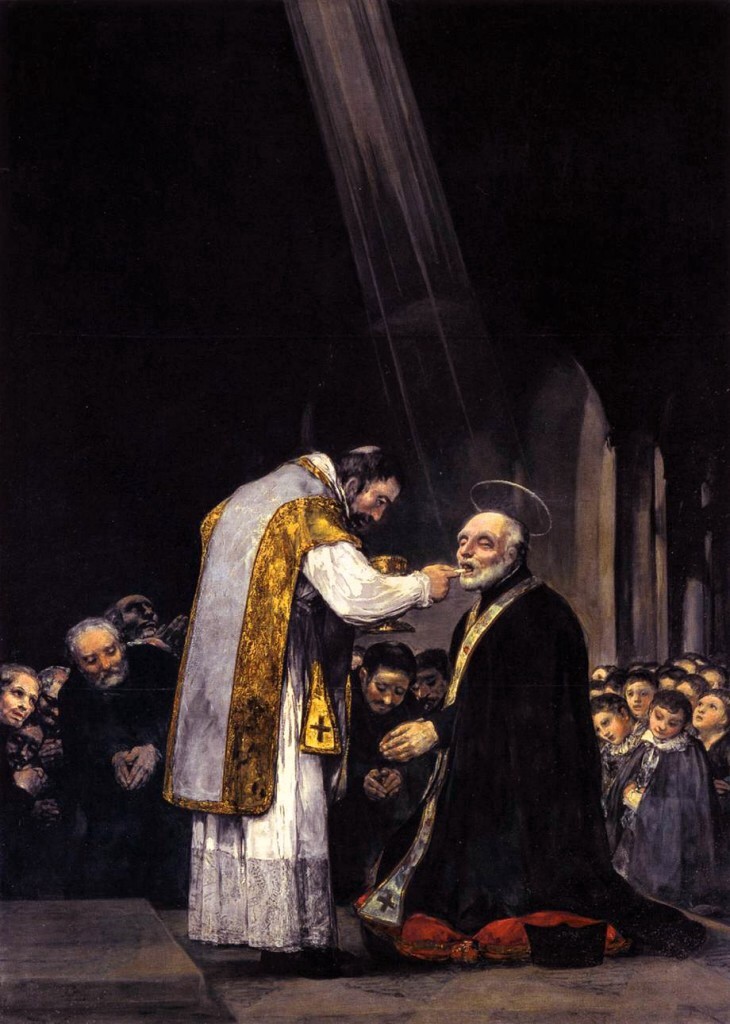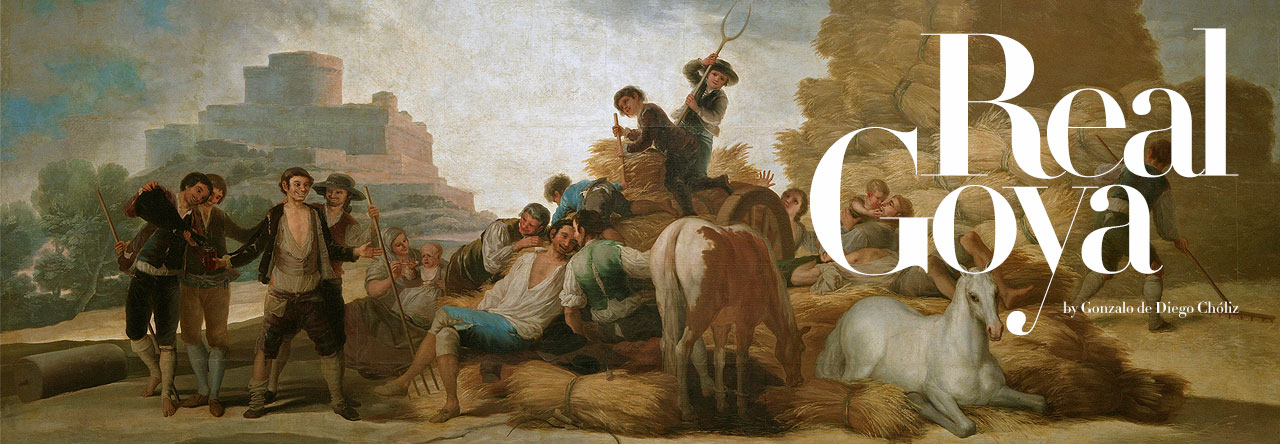I have in my library a Breviary, edited by the Fondo de Cultura Económica, published in Mexico in 1957. Its author, Herbert Read, writes about the function of the art in the development of human consciousness. An issue that struck me at the time and that could acquire at the legendary library and gallery of art Libros in Zaragoza. For me this is a gem of essay.
In the preface the author mentions Cassirer. Art, myth, religion, knowledge, “all live in special worlds of images, which reflect not only the empirically given, but that rather they produce in accordance with an independent principle”. And Read adds the images, once created, are eternal -or at least they last as have sensory acuity-. But much depends on our ability to create them and their strength, which is certainly what we get involved with the word “progress” in the world of ideas, but we grasp them in the contemplation of the images.
On the great universe of Goya is a painting, ‘The last communion of St. José de Calasanz’, that I use as more than adequate sample to reflect on the question. Goya was in its infancy a student of the Escuelas Pías -founded by Saint Calasanz- and there’s no doubt that would be indelibly marked in his spirit by the figure and work of the founder. I refer to this painting: just look at it with some attention and the viewer will be caught completely. It is a work of full and absolute maturity, peak in the creative activity of coincidence in time with the very famous black paintings. And it is especially a painting’s formal complexity, demonstrative of real capacity for the creation of images with sensory acuity.

Last communion of St. José de Calasanz Oil on canvas. 250 x 180 cm. Francisco de Goya, 1819 Calasancio Museum. Madrid, Spain
When already in a decisive moment of his life, with and advanced age and with great experience and knowledge receives commissioned to this painting, Goya raises in his entirety the matter and reaches to reflect, with admirable vibration, the very remarkable love that comes through.
Art is the essential tool in the development of human consciousness. These are words of Conrad Fiedler, whose importance as a philosopher of art are more than a half century of recognition in his native Germany. And consciousness of Goya exceeded by far the limited to attempting an interpretation only of devotion, tasteless and out of step. A custom scale (both by the size of the painting and its destination for a high altar) Goya wanted and knew how to be more celestial and less earthly, because it is apparent that Goya was a spiritual, full of affection also superior and human being.
It is not about showing an illusion, nor even the illusion of reality, but to represent the reality of the same consciousness, subjective reality. At the borders of the self conscious area have no spatial or temporal boundaries. And in the manner of St. Augustine in his Confessions, Goya and his psychological penetration capture the issue implicit in the task of making own interior life something intelligible and credible to other men.
Good approach, of course, to complete an assignment that, without doubt pleased him, that provided the great joy of trying to make a painting that achieved success being mirror to others, be the object of attention and be him imitated and admired, and witness to posterity, example, model and useful resource to other sentient beings. And how not to be so, how not get immensely happy if you could get to be the voice of those who cry out in silence at the heart of all? How not to feel happy to get to transmit high feelings? To be the vehicle chosen by the friars who raised him to be him, just him, commissioned to show to the world the sublime beauty of the truth of a Saint ridden in their entirety before the Eucharist, precisely on the day of his death? Yes, the last communion of Calasanz before moving on to a higher stage. To find the ultimate and definitive peace in front of all those to whom he loved in the world. His brothers in the order, his students and his most deeply felt beliefs. It is offered to Goya transform the mystical in art and to achieve this will present an outer facet of the internal reality of Calasanz.
Goya achieves succeed of such challenge and gets finally paint this painting in the emotional state that sought so hard and formally translating that inner world of feeling. A painting which image continues today to be eternal and resisting with the same sensory acuity in that distant and decisive 1819.
Gonzalo de Diego
